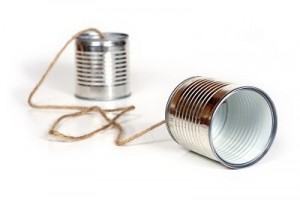 A constant variable is one that does not change from trial to trial. A changing variable is the one variable you are testing for. It does change from trial to trial. One of the most difficult things to do in scientific research is to know what all of your variables are and to keep all but one variable constant.
A constant variable is one that does not change from trial to trial. A changing variable is the one variable you are testing for. It does change from trial to trial. One of the most difficult things to do in scientific research is to know what all of your variables are and to keep all but one variable constant.
In these pendulum experiments other variables were the temperature of the room, the humidity, the spin of the Earth, the design of the pendulum, etc., etc. We made an assumption that all those variables remained constant and didn’t really matter to our experiments. In this case, that’s a safe assumption but sometimes you can’t be too sure!
Constant and changing variables are around you all the time. What would be some variables in your breakfast? Which ones change from morning to morning? Which ones stay the same? What about some variables in the car? Which are constant and which are changing?
Let’s take a look at how to handle these questions:
What you need:
- String
- Several weights of some sort (a bunch of the same kind of washer works very well)
- Tape
- Scale (optional)
- Timer (or a watch with a second hand)
- Use the same pendulum set up you used for “The Size of the Swing” experiment.
[am4show have=’p8;p9;p10;p37;’ guest_error=’Guest error message’ user_error=’User error message’ ]
1. Make an observation. Play with the pendulum a bit and see how it behaves.
2. Make a hypothesis. How will the weight of the bob (the weight at the end of the pendulum) effect the number of swings in 10 seconds? Will there be more, less, or no change in the number of swings as the bob gets heavier.
3. Set a timer for 10 seconds or get someone who has a watch with a second hand to tell you when 10 seconds are up.
4. Now for the test. Pull the pendulum back as far as you’d like.
5. Start the timer and let go of the weight at the same time.
6. Count the swings the pendulum makes in 10 seconds.
7. Write down what you found (collect the data). This works well if you make a chart with two columns, one for weight of the bob, and one for number of swings.
8. Do two more trials with the same bob.
9. Now change the changing variable. In this case you want to increase the weight of the bob. If you have several washers of the same kind, the easiest way to do this is to just add more washers to the end of the string. You can also add paperclips if you have quite a few of them. If you don’t, then change the bob to different objects that get heavier and heavier with each trial. If you change the number of objects, just record how many you have (3 washers, 10 paper clips, etc.). If you change the type of object and have a scale, record the weights of the objects. If you don’t have a scale, just put the objects in order of increasing weight. The actual mass of the objects doesn’t really matter as you’ll see by your conclusions. Remember to change the weight of the bob, but don’t change the length of string. The weight of the bob is your changing variable this time. The length of string is… what variable? Constant. Right, you’re getting the hang of this!
10. Redo steps 3 through 9.
11. Continue increasing the weight and doing trials until you get at least five trials with five different weights.
12. Now report your results. Take a look at your data and see if you find a trend. Do you get more swings as the weight increases, less swings, or does the weight of the bob matter? Are you surprise by the fact that weight didn’t matter? Next lesson we will discuss gravity and then this odd result will make sense.
Feel free to continue playing with the pendulum. You dropped the bob from about the same height each time. Would you get different results if you dropped the bob from different heights? Try it, but remember to keep the string and the weight constant. If you do this experiment, what is your changing variable? The height of the drop, right? See you are paying attention!!
[/am4show]

 How many drops of water can a penny hold? We’re going to learn how to use the scientific method using everyday materials so you’re comfortable with how it works and how to apply it to every situations. Don’t worry – we’re also going to show you how to do more complicated projects later… but first, let’s cover the basics.
How many drops of water can a penny hold? We’re going to learn how to use the scientific method using everyday materials so you’re comfortable with how it works and how to apply it to every situations. Don’t worry – we’re also going to show you how to do more complicated projects later… but first, let’s cover the basics. Now let’s use the scientific method to discover a couple of things about pendulums. Before we start, I need to tell you two new terms. One is constant variable and the other is changing variable. A variable is a part of your experiment, like the coin in the Underwater Presidents experiment. If it is a constant variable, it stays the same for every trial of that experiment.
Now let’s use the scientific method to discover a couple of things about pendulums. Before we start, I need to tell you two new terms. One is constant variable and the other is changing variable. A variable is a part of your experiment, like the coin in the Underwater Presidents experiment. If it is a constant variable, it stays the same for every trial of that experiment. A constant variable is one that does not change from trial to trial. A changing variable is the one variable you are testing for. It does change from trial to trial. One of the most difficult things to do in scientific research is to know what all of your variables are and to keep all but one variable constant.
A constant variable is one that does not change from trial to trial. A changing variable is the one variable you are testing for. It does change from trial to trial. One of the most difficult things to do in scientific research is to know what all of your variables are and to keep all but one variable constant.


 Observation is a skill just like any other skill and it can be exercised and improved over time. Being a good observer means always keeping your eyes open and being aware of what’s around you. With good observation skills and knowledge the world becomes just that much more wonder-filled!
Observation is a skill just like any other skill and it can be exercised and improved over time. Being a good observer means always keeping your eyes open and being aware of what’s around you. With good observation skills and knowledge the world becomes just that much more wonder-filled! Fish in the can saws wild apples dog car sidewalk tree. Shirt the table carpet in the floor roof cloud. What? What do you mean I’m not making sense? I’m using simple English words. Oh, I see. I must not be communicating.
Fish in the can saws wild apples dog car sidewalk tree. Shirt the table carpet in the floor roof cloud. What? What do you mean I’m not making sense? I’m using simple English words. Oh, I see. I must not be communicating. Communication isn’t just giving directions however. It’s also hearing what’s being said and following directions. How good are you at following directions? (I know the first time I tried this experiment, I didn’t do nearly so well!)
Communication isn’t just giving directions however. It’s also hearing what’s being said and following directions. How good are you at following directions? (I know the first time I tried this experiment, I didn’t do nearly so well!) This is a great activity and it really shows how hard it is to communicate with someone. It does a great job at pointing out assumptions and showing how careful and detailed you have to be with your instructions. It also shows that the listener has an important role to play. The listener must be very careful not to make assumptions and to be sure to take responsibility for what they are hearing by asking good questions.
This is a great activity and it really shows how hard it is to communicate with someone. It does a great job at pointing out assumptions and showing how careful and detailed you have to be with your instructions. It also shows that the listener has an important role to play. The listener must be very careful not to make assumptions and to be sure to take responsibility for what they are hearing by asking good questions.